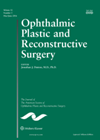You searched for "Angioid"
Imaging without a slit-lamp, more Google Glass news and strabismus humour
Pinterest Many of you will know about this site that organises collections of mostly graphical information. It’s used heavily for fashion, recipes and cupcakes. Well, it seems it has also become quite a useful resource for ophthalmology, optometry and related...App and web service recommendations
1 April 2019
| David Haider
|
EYE - General
This article offers some app and web service suggestions. A few are new and others well established, but all offer useful features. Messaging for teams Many businesses provide their employees with instant messaging services to allow calling, messaging and collaboration....
Useful, interesting, or maybe both
3 April 2024
| David Haider
|
EYE - General
This column is often, but not always, about ophthalmic tech. This is one of those ‘not always’ editions. Time to share some interesting or useful things from the internet which can help in a number of ways, from preparing presentations...
Vitreomacular traction: natural course vs. vitrectomy vs. ocriplasmin
3 June 2024
| Haider Manzar
|
EYE - Vitreo-Retinal
Over time, the vitreous gel completely separates from the retina in a process known as a posterior vitreous detachment (PVD). In some instances, however, the vitreous does not detach entirely and remains adherent to the macula. The term vitreomacular traction...
Lacrimal gland carcinoma outcomes
1 April 2019
| James Hsuan
|
EYE - Oculoplastic
This is retrospective review of outcomes of lacrimal gland epithelial tumours treated between 1972 and 2014 at Moorfields Eye Hospital. Seventy-nine patients were reported, comprising 53 adenoid cystic carcinomas, 15 primary adenocarcinomas and 11 carcinomas ex-pleomorphic adenoma. The authors compare...
Third nerve palsy
1 August 2017
|
EYE - Neuro-ophthalmology, EYE - General
Case scenarios A 71-year-old female presented to a nearby eye emergency unit with two days history of partial ptosis in her left eye with diplopia. She saw her GP earlier that day and he asked her to go to the...
Feb/Mar 2018 Quiz
History A 48-year-old farmer with gradual worsening vision in her only eye was referred by her optician. She had recently moved to the UK and required an interpreter during consultation. She seemed to have had vision problems since childhood. Although...How to be ‘appy’ on call: a brief guide to mobile phone applications for the on-call ophthalmologist
1 December 2022
| Madeleine Corkery-Hayward, Ryian Mohamed, Harry Petrushkin, David Haider
|
EYE - General
One of the unexpected outcomes of the COVID-19 pandemic has been an increased reliance and integration of computer technology within hospital medicine. The need for stricter infection control policies during and after lockdown has seen a boom in technology utilisation....
We are all Hadiza
1 February 2018
| Gwyn Samuel Williams
|
EYE - Cataract, EYE - Cornea, EYE - Glaucoma, EYE - Imaging, EYE - Neuro-ophthalmology, EYE - Oculoplastic, EYE - Oncology, EYE - Orbit, EYE - Paediatrics, EYE - Pathology, EYE - Refractive, EYE - Strabismus, EYE - Vitreo-Retinal, EYE - General
When I worked as a registrar at Newport many years ago I remember a no-nonsense corneal consultant railing about the way the tragic case of Lucie Linforth was being reported in the media. Lucie was a toddler taken into a...
Blame the lens – not its position – in refractive surprise
3 February 2023
| Josephine A Bates, Simon N Madge
|
EYE - Cataract, EYE - Refractive, EYE - General
Aetiology of postoperative refractive surprise Weber coined the term “wrong eye, wrong intraocular lens, wrong patient” in 2008 as an aide memoir of major factors believed to underlie refractive surprise – defined as a significant unintended difference between dioptric refraction...
Bilateral eye pain after contact lens wear: an inadvertent case of chemical eye injury
1 December 2022
| Derek K-H Ho, Vinod Kumar
|
EYE - General
Introduction There are around 4.1 million contact lens wearers in the UK [1]. While the vast majority of them do not experience any complications, over the past years there have been cases of acanthamoeba keratitis and multiple retained contact lenses...




